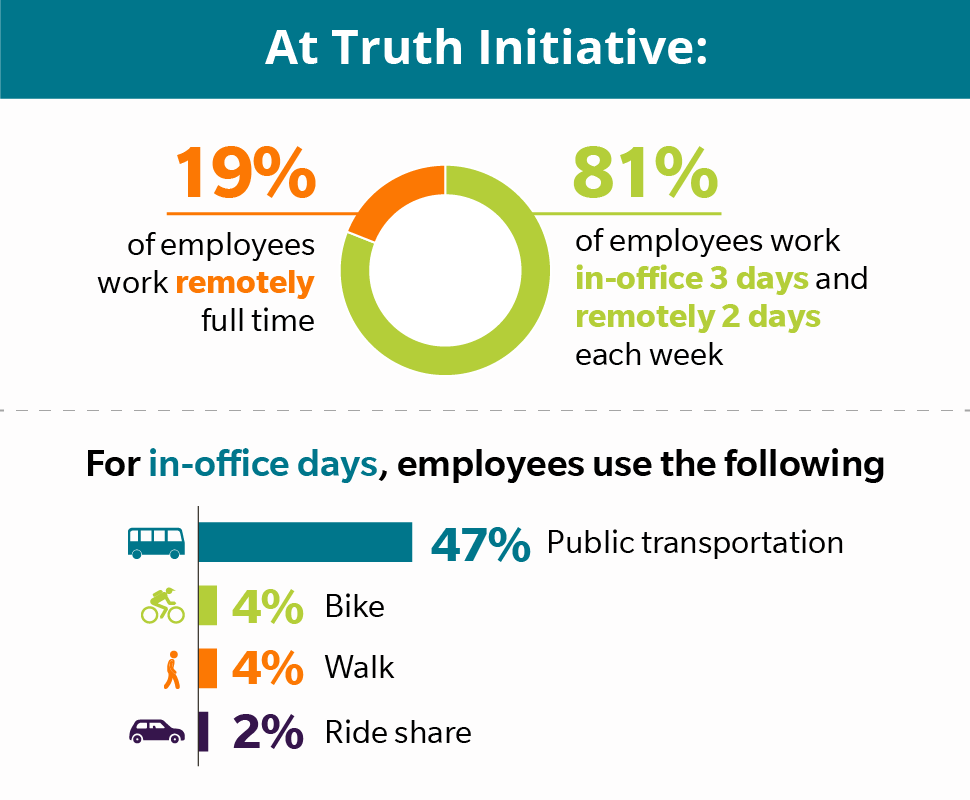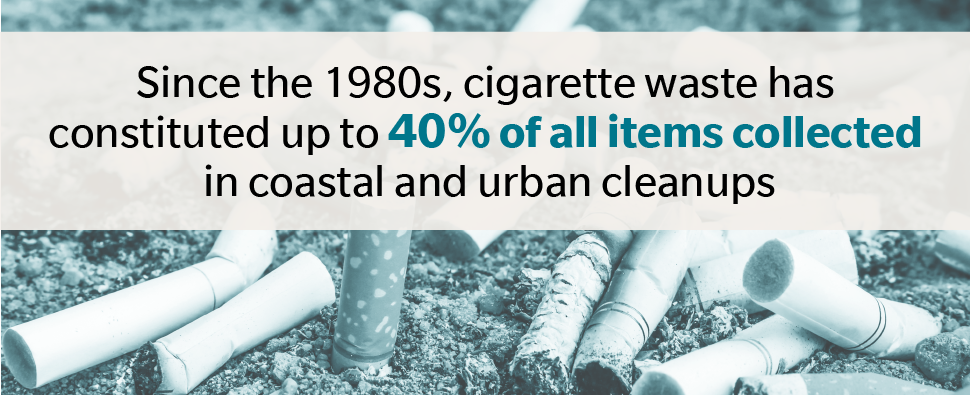What does the environment have to do with the vendors you select for your health and wellness benefits?
Plenty.
In recent years, more and more companies are pledging to work only with vendors that adhere to social and environmental standards.
At Truth Initiative, protecting the environment has long been a priority. We believe that all individuals have the right to live, work, and play in a healthy, tobacco-free world. And, when a business has a minimal impact on the environment, it becomes a stronger and more resilient organization that is built for longevity and success.
Here are 3 examples of how we operate with environmental impact in mind:
Green Headquarters
The building housing our headquarters at 900 G Street, NW, in Washington, DC, earned a GOLD rating on the LEED Green Building Rating System.
Developed by the U.S. Green Building Council, this is the most widely used rating system for design, construction, and operations—buildings with LEED certification improve efficiency, lower carbon emissions, and offer healthier spaces for employees and visitors.
In September 2022, we were informed that the building earned the U.S. Environmental Protection Agency’s (EPA) ENERGY STAR certification for superior energy performance and UL Verified Healthy Building certification for Indoor Air and Water.
Achieving the ENERGY STAR certification shows that our building is saving energy and helping to protect the environment by generating fewer greenhouse gas emissions than typical buildings.
Green Commuting
According to the EPA, the transportation sector is one of the largest contributors to greenhouse gas emissions. Although this includes commercial aircraft and trucks, the agency notes that “light-duty vehicles” like cars account for nearly 60% of emissions.
Because of that, the EPA encourages greener transportation, particularly for commuting, and suggests biking, walking, carpooling, and public transportation. Another option for companies? Offering remote work options that eliminate commuting for those employees.
Truth Initiative supports both strategies. With a hybrid work policy, 81% of employees commute only 3 days a week and work remotely the other 2 days. The other 19% of employees are full-time remote.
On the 3 in-office days, 47% of employees use public transportation, 4% bike to work, 4% walk, and 2% ride share. To support employees in using environmentally friendly resources for commuting, Truth Initiative offers a monthly stipend to cover public transportation and to incentivize walking or biking to work.
Green Communities
As the leading public health organization exclusively focused on tobacco control, it’s no surprise that much of our work is focused on the environment. Tobacco products are just as cancerous to the planet as they are to individuals.
In a Truth Initiative report on the topic, we highlighted how cigarette and e-cigarette waste contributes to water, air, and soil pollution. For example, an estimated 766,571 metric tons of cigarette butts make their way into the environment every year.
Take a look at any roadway, sidewalk, beach, or park and you’ll quickly notice that cigarette butts are the biggest source of litter. Since the 1980s, cigarette waste has constituted up to 40% of all items collected in coastal and urban cleanups.
This isn’t just unsightly—about 98% of cigarette filters are made of plastic fibers that do not biodegrade and instead leach toxic chemicals like arsenic into the environment.
E-cigarette cartridges are another major concern. These—as well as newer single-use products that are on the rise—contain chemical waste as well as metal and plastic.
A Truth Initiative survey found that almost half (46.9%) of e-cigarette device owners said the e-cigarette device they currently use does not provide disposal information, such as where to send used batteries or empty pods. The survey also found that more than half (57.8%) of respondents who had vaped nicotine in the past 30 days found it inconvenient to dispose of e-cigarette waste responsibly.
Truth Initiative continues to gather data about this topic and call on the tobacco industry to develop standardized processes for the disposal of e-cigarette devices, refills, and e-liquids.
Addressing tobacco addiction is essential for the health of everyone—individuals, families, communities, and the planet. By helping employers and health plans empower people to live tobacco free through the EX Program, we are also positively affecting the environment.
A Partner Committed to the Environment
As you search for high-value benefits to protect the health of your employees or members, be sure to look for a partner that shares your commitment to protect the world in which your people live.
At Truth Initiative, we’re committed to building a greener, healthier, and more breathable world, and we encourage other organizations to join us.
To start a conversation to see how together we can better improve the health of your population, please contact us today.






